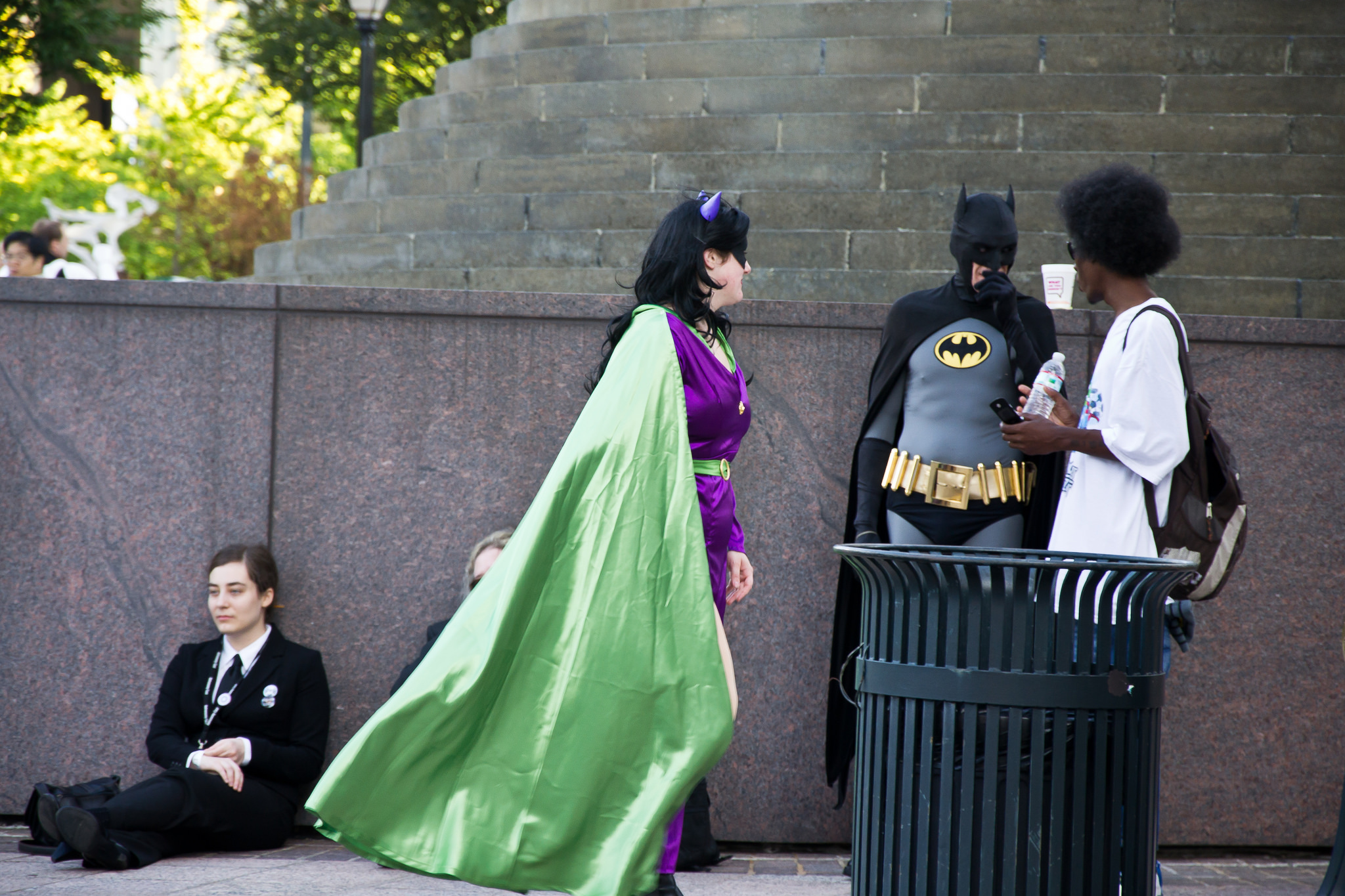DragonCon is the largest multi-genre popular culture convention held in the United States. Every year, tens of thousands of fans travel to downtown Atlanta, Georgia over the four day Labor Day weekend, flooding the city with costumes, commerce, and entertainment. As of 2018, the convention boasts over 80,000 annual attendees. The convention—or con, as it’s called—was founded in 1986 by a local science-fiction and fantasy gaming group called the Dragon Alliance of Gamers and Role-Players. The following year, the first annual DragonCon was held and attracted approximately 1,200 attendees (Yandel 1987). Twenty-eight years, and 79,000 fans later, the convention has developed into a cultural epicenter for costumers throughout the United States and is widely regarded for the intricacy, craftsmanship, and inventiveness of its cosplayers.
Cosplay is a portmanteau of “costume” and “play.” The term describes the act of donning a costume and accessories as a means to represent a particular character that derives from and circulates within mass mediated texts. Although many individuals cosplay as historical figures, religious icons, or reality television personalities, most choose to portray fictional characters from film, television, video games, literature, comics, commercials, or social media (Joseph-Witham 1997; Napier 2007; Silivo 2006, 2010). Cosplay is what Gérard Genette has called art in the “second degree” (1997). It is a work of adaptation, both a replication and a re-working of the readymade. Fans select images, personalities, and backstories from the information flows of their media environments and mobilize them for their own expressive ends, an act of appropriation that Henry Jenkins (1992), following Michel de Certeau (1984), has called “textual poaching.”
Cosplaying is a carnivalesque behavior (Bakhtin 1984). It interrupts the flow and texture of everyday life. It subverts the ordinary and transforms the banal into the sublime. Cosplayers give their favorite characters shape and form beyond the screen and page by rendering them as three-dimensional objects and by bringing them to life in performance. Cosplayers spend hundreds of hours and hundreds, even thousands of dollars creating screen accurate costumes and replica props. They remake their bodies in the image of mass culture and transform ordinary objects into works of art—two liter bottles and PVC pipes become faux steam engines, cardboard boxes are painted and sutured together to create blocky robots, and interlocking foam floor mats are crafted into ornate suits of armor. Bodies are painted, hair is dyed, and eyes are hidden behind special effects contact lenses.
Cosplay is what Henri Lefebvre calls the festival (1991). It is a heightened state of being-in-and-interacting-with-the-world, a moment of rupture in the ordinary that has the possibility to spread and multiply and persist. Cosplayers express themselves through a poetics of reproduction in which they artfully remake their bodies and mundane objects. It is an art that takes that which exists at hand and defines it in new terms. It renders the everyday, fantastic, and the fantastic, ordinary.
Within the confines of the convention, attendees are surrounded by like-minded individuals—self-proclaimed nerds, geeks, and fans. When they are in their costumes, they can become—even if only for the briefest of moments—someone or something else. They can forget about work and school, bills, and the banalities of ordinary life. In this image, we see the point where the ordinary and the mundane and the extraordinary and performative meet. A few cosplayers step outside of the convention hotel and onto Peachtree Street where their costumes now mark them as different. They are, in Mary Douglas’ words, “matter out of place” (1966). They are met by onlookers who ask if they can take a selfie with them. The cosplayers oblige them before returning to the convention and their momentary escape from reality.

Commentary on Rachel Tanur's Works: Drag Queen 3